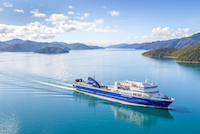Eco Tourism in New Zealand
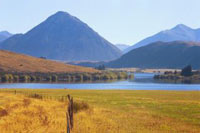
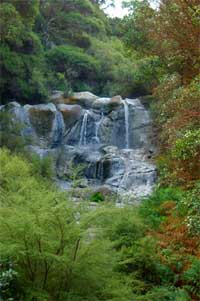
Eco tourism is short for ecological tourism. New Zealand is a magical country of amazing landscapes full of amazing wildlife. While eco tourism in New Zealand caters to the travellers, it is also of great importance to ensure that our environment remains in good sustainable condition.
The International Ecotourism Society defines ecotourism as "responsible travel to natural areas that conserves the environment and improves the well-being of local people."
Tourism and travel, as global industries, have a profound impact on the environment and cultures of the world. Fragile natural resources like forests can be damaged or depleted by too many visitors or irresponsible use. Animal habitats can be devastated by visitors and eco systems altered forever.
The aim of all eco tourism in New Zealand is to reduce the negative impacts on the surrounding environment, and even try returning something back into the environment, for example, volunteer work.
The vast open spaces filled with stunning rugged landscapes, gorgeous beaches, temperate climate and fascinating animal and plant life make New Zealand's natural environment attractive to visitors. The great advantage of New Zealand nature is that there are many different landscapes, environments and ecosystems so close to each other.
The introduction of humans to New Zealand coincided with the decline of many native animals and plants. Fortunately, eco tourism in New Zealand is beginning to have a positive effect on our environment.
New Zealand eco tourism endeavors to maintain our current status and minimise the impacts of ecological effects on the environment.
Bird Watching and Sanctuaries
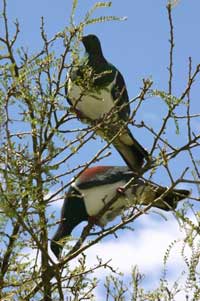
New Zealand is home to many endemic species of birds. Our isolation means that we have a unique birdlife that the bird lover amongst us will thoroughly enjoy learning about. There are many opportunities to see New Zealand's birds in their natural environment, join an organised tour or get a private tour tailored to your own interests of eco tourism in New Zealand.
As Māori and Europeans settled New Zealand, they hunted birds and brought predators including rats and stoats. This, and a loss of habitat, led to the extinction of a number of birds including the moa and huia. Others, such as the kakapo and takahe, became endangered.
New Zealand's national symbol, the kiwi, is a nocturnal flightless bird with nostrils on the end of its large beak. It is now endangered, and difficult to see in the wild. However, there are a number of 'kiwi houses' at zoos and wildlife parks. While they may look cute, kiwi can be fierce and highly territorial.
New Zealand's moa was the only wingless bird ever known. The giant moa, one of eleven species of moa, was also the tallest, standing up to three metres (nine feet). Many moa bones and skeletons have been found in small caves which the hapless moa fell into. Māori hunted moa, and it is believed the birds became extinct around 400 years ago.
Click here to view tourism operators for bird watching in New Zealand.
Cruises, Day and Overnight
From long sandy beaches to wild, rugged coastlines, New Zealand has over 15,000 kilometres of beautiful and varied coastline. Relax on deck and see New Zealand nature in all its glory.
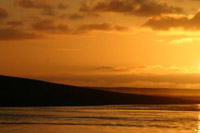
Marvel at New Zealand's beautiful coastline and waterways from a unique offshore perspective. You could find yourself sailing through glorious bays, island-studded gulfs and sheltered waterways, or exploring inland rivers and lakes.
In the far north and on most of the east coast of the North Island you'll find long sandy beaches perfect for swimming, surfing and sunbathing. The North Island's west coast has dark sandy beaches, with sand heavy in iron. The north of the South Island has some beautiful sandy beaches, while the coastline around the rest of the South Island tends to be wilder and more rugged.
Eco tourism in New Zealand also has abundant and diverse marine life. Whale watching and swimming with dolphins are two of New Zealand's most highly recommended tourist experiences. The small (up to 1.4 metres) Hector's dolphin is the world's rarest and can only be found in New Zealand waters.
Click here to view tourism operators for cruises, day and overnight in New Zealand.
Farms
New Zealand has a large farming community, it's a common joke to say there are 10 sheep for every person here. Farm tours allow tourists the opportunity to meet farmers face-to-face and to get their hands dirty on a real farm. Not an opportunity offered in many other parts of the world.
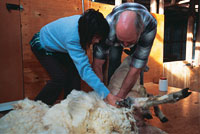
Take a tour through a fully functional New Zealand farm and get an insight into the real actions of a working farm. See what happens on a day to day basis, and participate in the general tasks if you want - milk a dairy cow, feed the baby animals, observe sheep shearing and dog mustering. Remember to go in spring (September to November) if you're wanting to see and feed the baby animals.
Other farming activities you may get the opportunity to participate in is horse trekking, possum or rabbit shooting or bush walks.
New Zealand farm types:

- Sheep
- Cattle/Dairy
- Deer
- Alpaca
- Llama
- Ostrich
- Pig
- Fish
- Vegetables
- Fruit
- Grain
- And much, much more...
A popular attraction for all ages!
Click here to view tourism operators for farms in New Zealand.
Glowworms and Caves
The New Zealand glowworm is the larva of the fungus gnat. Generally living in dark, moist caves, the luminescent organs of the glowworm emit light (hence the appropriate name), attracting insects. Nesting themselves on the ceilings of caves, the glowworms hang sticky threads down, capturing flying insects for deavouring. The brightest glowing worms are the hungriest!
An impressive sight, glowworm tours are a popular tourist attraction in New Zealand. Explore the network of New Zealand's underground caves to get a view of these amazing creatures within New Zealand nature today.
Click here to view tourism operators for glowworms and caves in New Zealand.
Natural Wildlife

Copyright: Lindsey Gillespie
New Zealand has a huge variety of natural wildlife and is amongst the leading countries for conservation.
Part of any New Zealand trip should be to view the wildlife up close. Whales, dolphins and seals are just a few of the many encounters you can experience within eco tourism in New Zealand.
In addition there are many unique animals such as the flightless Kiwi bird. Fantastic zoos around the country provide an up close encounter with many animals you wouldn't get the chance to see in the wild. Don't forget your camera!
Click here to view tourism operators for natural wildlife in New Zealand.
Observations and Planetariums
The wonders of space fascinate almost everyone, and the clear skys above New Zealand mean you can get a crystal clear image of the wonders above. See endless stars, planets, Saturns rings and even craters on the moon. Hours can be spent marveling at the wonders of the universe.
View a simulation of the night time sky projected onto the ceiling of dome shaped planetariums, no matter what the weather is doing! Look through powerful telescopes and see excellent detail of far off stars and planets. It's great entertainment for young and old alike.
Click here to view tourism operators for observations and planetariums in New Zealand.
Scenic Landscape
You'll find a variety of awesome landscapes within New Zealand, all within easy reach of each other. Spectacular glaciers, picturesque fiords, rugged mountains, vast plains, rolling hillsides, subtropical forest, volcanic plateau, miles of coastline with gorgeous sandy beaches - it's all here.

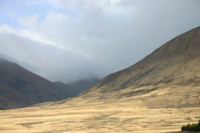
Over 20 percent of New Zealand is covered in national parks, forest areas and reserves, which is why New Zealand eco tourism is so unique. Our 13 national parks contain an incredible variety of unspoiled landscape and vegetation. Administered and maintained by the Department of Conservation, Te Papa Atawhai, these parks provide opportunities for a wide variety of activities including hiking, mountain biking, skiing and snowboarding, kayaking and trout fishing. Most national parks have excellent hiking tracks and camping facilities, including nearly 1000 huts throughout the country. You'll also find information centres at these parks, and helpful signage along the tracks.
Over thousands of years, the process of subduction has seen parts of the New Zealand landscape become submerged. The Marlborough Sounds and Fiordland are examples of high mountain ranges that have 'sunk' into the sea, creating spectacular sounds and fiords. These areas provide some of New Zealand's most picturesque scenery, with steep lush hills plunging down to the deep still bays below.
New Zealand's high rainfall and many sunshine hours give the country a lush and diverse flora, with 80 percent of the trees, ferns and flowering plants being native. From the kauri forests of the far north to the mountain beech forests and alpine tussock of the Southern Alps, you'll find fascinating plants and trees in every region of New Zealand.
You'll be awed by the majestic evergreen native forests that include rimu, totara, many varieties of beech and the largest native tree of them all, the giant kauri. Underneath the trees you'll find a dense and luxurious undergrowth including countless native shrubs, a variety of ferns, and many mosses and lichens.
For more detailed information on New Zealand nature, check out our pages below:

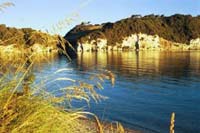
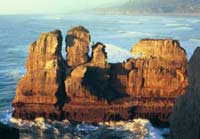
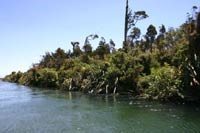
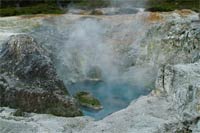
Coastal highlights - New Zealand has coastline on a grand scale. Beaches, bays, harbours and cliff edges add up to a total length of around 18,000 kilometres. You'll find everything from the tropical prettiness of turquoise water and crystalline sand to the soulful drama of surf exploding against ancient sandstone.
History and culture - the people and places you'll encounter in New Zealand all have stories to tell. The great Polynesian navigator Kupe first found his way here around 1000 AD, then Captain Cook's arrival in 1769 unleashed a sea of change for the land and its inhabitants. You can trace the emergence of modern New Zealand by exploring the events of the past.
Islands - scattered all around the edges of New Zealand's coastline. Some are no bigger than a tennis court, others are the size of a small country. They're hideaways for rare bird species or escape hatches for city dwellers. Many are protected from development or habitation, so that they can be enjoyed in their most natural state.
Lakes - time to reflect, or maybe time to flick a fly rod. A New Zealand lake can be a destination in itself or a moment of tranquillity on the way to somewhere else. Discover dune lakes, mountain lakes and volcanic lakes. Some are stocked with trout, others are strangely coloured and there are one or two that are believed to be bottomless!
Natural phenomena - strange and unusual natural phenomena awaits the traveller who checks out New Zealand's idiosyncrasies. Peer into the bright blue of glacier ice, smell the sulphurous steam from a seething geothermal vent, delve into the limestone underworld or watch a waterfall plunge more than 600 metres into one of the world's deepest fiords. Your explorations into this eco tourism in New Zealand will be rewarded with a sense of awe that will never quite go away.
Parks and reserves - beautiful places and created spaces let you enjoy nature, culture or the fruits of somebody elses obsession. New Zealand's gardeners and conservationists are famous for their energy and perfectionism. Pack a picnic lunch or a snorkel, depending on whether the reserve you're visiting is above ground or below the waves.
Scenic views - in one way or another, New Zealand eco tourism is always suggesting you 'go up and see the view'. We might be talking about a gentle hill above a rural town or the cloud-piercing enormity of Mount Cook (Aoraki). The land is rarely flat, and where it is there's always a mountain range or volcano close by to provide full-strength panorama.
Walks and trails - New Zealand eco tourism offers walks and trails from amazing forests to exotic stretches of coastline. These walks offer an experience never to be forgotten. The simple action of putting one foot in front of the other is a way to feel the landscape of New Zealand through the soles of your feet. By having physical contact with this New Zealand nature, you let it affect you. The sensations and scents of cool forests, rushing rivers, sun-warmed rock and salt-washed sand have the power to refresh and rejuvenate your spirit.
Click here to view tourism operators for scenic landscape in New Zealand.
Volcanic and Geothermal

New Zealand sits on two tectonic plates. The North Island and some parts of the South Island sit on the Australian Plate, while the rest of the South Island sits on the Pacific.
Being straddled over two tectonic plates and sitting on the Pacific 'ring of fire' can have its disadvantages in the form of volcanoes, earthquakes and other natural hazards. However, this subterranean activity also blesses New Zealand and its eco tourism with some spectacular geothermal areas and relaxing hot springs.
Click here to view tourism operators for volcanic and geothermal in New Zealand.












